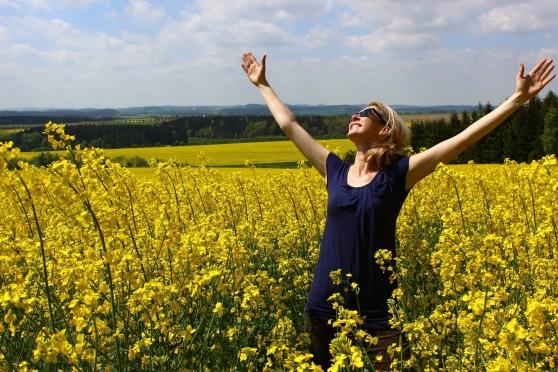Developing a gratitude practice

“Gratefulness is a setting of the heart, one that I can choose like a wavelength on the radio.” — Susan Mazrolle
Have you noticed that your thoughts have a large impact on your emotions? If you dwell on the negative, reliving frustrations and anger, you can feel trapped inside those emotions. And when you focus your attention on the things you are grateful for, it can have a rippling effect on your mood and your entire day.
Gratefulness is an awareness practice: a way of deepening and directing our attention. Like mindfulness, yoga or other practices, gratefulness can make us more resilient and flexible in the face of life’s challenges and can deepen our appreciation of life’s joys.
Research psychologists have found that people who have a sense of gratitude feel happier, sleep better, express more compassion and kindness and have stronger immune systems.
And you don’t have to be a born optimist to gain these benefits: It turns out that anyone can cultivate gratefulness by developing a practice. Simply keeping a gratitude journal—with entries on what you’re thankful for—can significantly increase your happiness and well-being.
Reflections can range from the simple, direct pleasures of a good cup of coffee or a beautiful view, to how you feel after a workout or after reflecting on the kindness of friends or strangers. Make no judgments about how big or small these moments of gratitude need to be. You are resetting your internal awareness to register the sources of joy around you and to feel appreciation for what they add to your life.
Here are some suggestions for developing a journaling practice:
- Make a conscious decision to become happier and more grateful.
- Focus on people for whom you are grateful and what your life would feel like without their presence.
- Remember events that were unexpected and savor the surprise.
- Rather than simply making a list, describe in more detail the sources of your gratitude.
- Writing once or twice per week can be as, or even more, beneficial than daily journaling.
There are as many ways to develop a gratitude practice as there are individuals. For some, it may mean taking a photo of something or someone they find beautiful and inspiring. For others, creating a drawing, poem or earth mandala of found natural items—leaves, flowers, acorns—may suit their practice. What is important is to keep your mind attuned to what uplifts you, stay open and give thanks for what brings you joy.